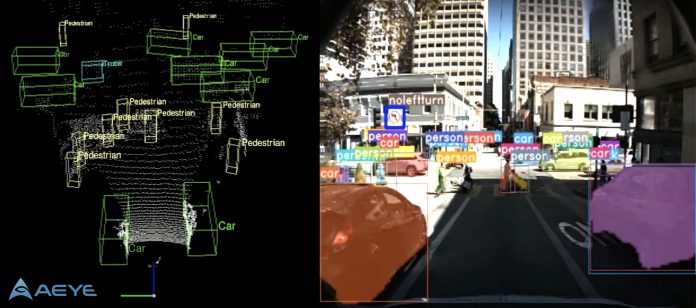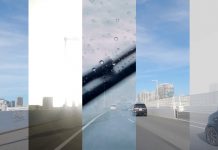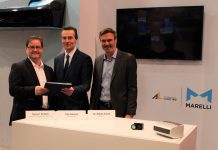- Adaptive sensing platform combines deterministic and AI-driven perception to deliver unequaled classification at speed and range, motion forecasting and collision avoidance capabilities
AEye announced the world’s first commercially available, 2D/3D perception system designed to run in the sensors of autonomous vehicles. For the first time, basic perception can be distributed to the edge of the sensor network. This allows autonomous designers to use sensors to not only search and detect objects, but also to acquire, and ultimately to classify and track these objects. The ability to collect this information in real-time both enables and enhances existing centralized perception software platforms by reducing latency, lowering costs and securing functional safety.
This in-sensor perception system is intended to accelerate the availability of autonomous features in vehicles across all SAE levels of human engagement, allowing automakers to enable the right amount of autonomy for any desired use case – including the most challenging edge cases – in essence, providing autonomy “on demand” for ADAS, mobility and adjacent markets.
AEye’s achievement is the result of its flexible iDAR™ platform that enables intelligent and adaptive sensing. The iDAR platform is based on biomimicry (see white paper), and replicates the elegant perception design of human vision through a combination of agile LiDAR, fused camera and artificial intelligence. It is the first system to take a fused approach to perception – leveraging iDAR’s unique Dynamic Vixels, which combine 2D camera data (pixels) with 3D LiDAR data (voxels) inside the sensor. This unique software-definable perception platform allows for disparate sensor modalities to complement each other, enabling the camera and LiDAR to work together to make each sensor more powerful, while providing “informed redundancy” that ensures a functional safe system.
AEye’s approach solves one of the most difficult challenges for the autonomous industry as it seeks to deliver perception at speed and at range: improving the reliability of detection and classification, while extending the range at which objects can be detected, classified and tracked. The sooner an object can be classified and its trajectory accurately forecasted, the more time the vehicle has to brake, steer or accelerate in order to avoid collisions. See AEye’s white paper on Range, Resolution and Rate.
Enabling Autonomy On-demand
First generation robotic vision systems tried to solve the challenges of fully autonomous driving by capturing as much data as possible. This required both time and power to process. Second generation systems are designed to intelligently collect, manage and transform data into actionable information.
The unique intelligent capabilities of the iDAR platform allow for applications ranging from ADAS safety augmentation, such as collision avoidance, to selective autonomy (highway lane change), to fully autonomous use cases in closed-loop geo-fenced or open-loop scenarios.
Engineers can now experiment using software-definable sensors without waiting years for the next generation of hardware. They can adapt shot patterns in less than a second and simulate impact to find optimal performance. They can also customize features or power usage through modular design, for instance using a smaller laser and no camera to create a specialized ADAS system for under $1000, or mixing and matching short and long range LiDAR with camera and radar for more advanced 360 degree systems for under $15,000. Unlike with the industry’s previous generations of sensors, OEMs and Tier 1s can now also move algorithms into the sensors when it is appropriate.
iDAR’s 2D/3D Perception System
AEye’s system more quickly and accurately searches, detects and segments objects and, as it acquires specific objects, validates that classification with velocity and orientation information. This enables the system to forecast the object’s behavior, including inferring intent. By providing the smarts to capture better information faster, the system enables more accurate, timely, reliable perception, using far less power than traditional perception solutions.
This 2D/3D perception system is based on AEye’s iDAR platform, whose perception advancements the company will make broadly available via a software reference library. That library includes the following features that will be resident in AEye’s AE110 (Mobility) and AE200 sensors (ADAS):
- Detection: Identification of objects (e.g. cars, pedestrians, etc.) in the 3D point cloud and camera. The system accurately estimates their centroids, width, height and depth to generate 3D bounding boxes for the objects.
- Classification: Classifying the type of detected objects. This helps in further understanding the motion characteristics of those objects.
- Segmentation: Further classifying each point in the scene to identify specific objects those points belong to. This is especially important to accurately identify finer details, such as lane divider markings on the road.
- Tracking: Tracking objects through space and time. This helps keep track of objects that could intersect the vehicle’s path.
- Range/Orientation: Identifying where the object is relative to the vehicle, and how it’s oriented relative to the vehicle. This helps the vehicle contextualize the scene around it.
- True Velocity: Leveraging the benefits of agile LiDAR to capture the speed and direction of the object’s motion relative to the vehicle. This provides the foundation for motion forecasting.
- Motion Forecasting: Forecasting where the object will be at different times in the future. This helps the vehicle to assess the risk of collision and charter a safe course.














